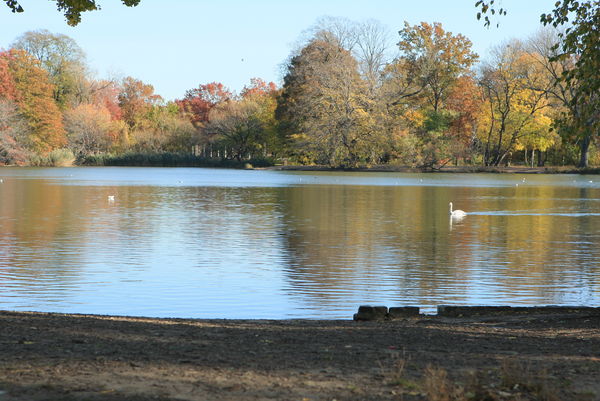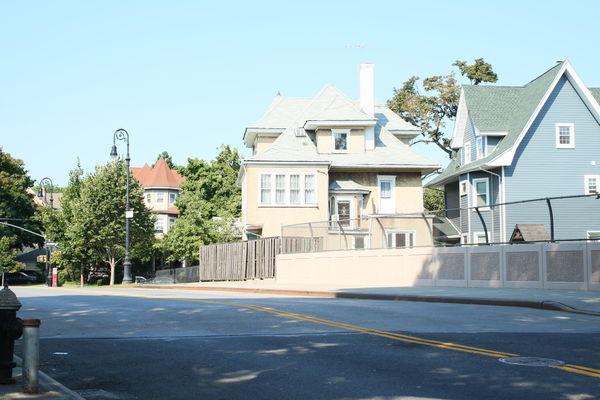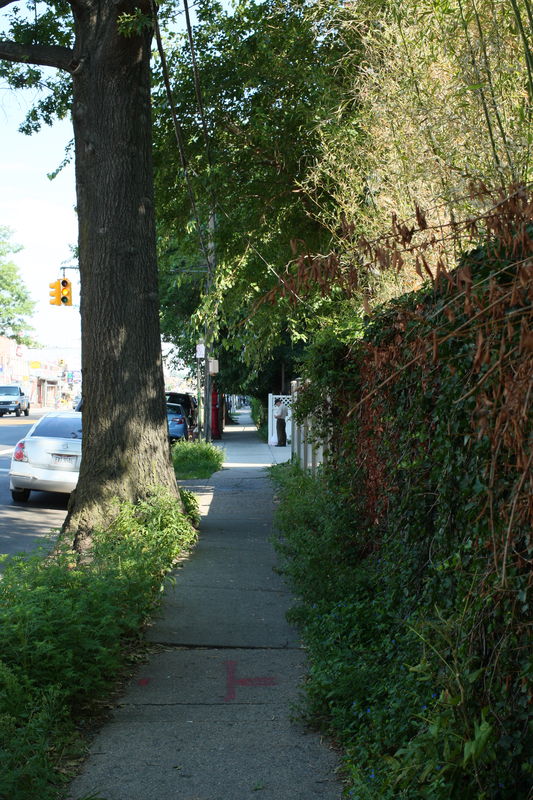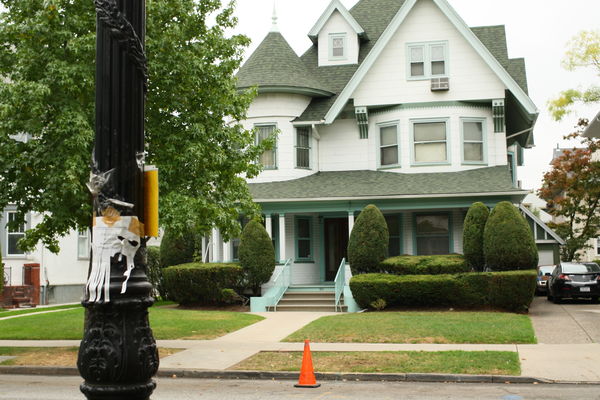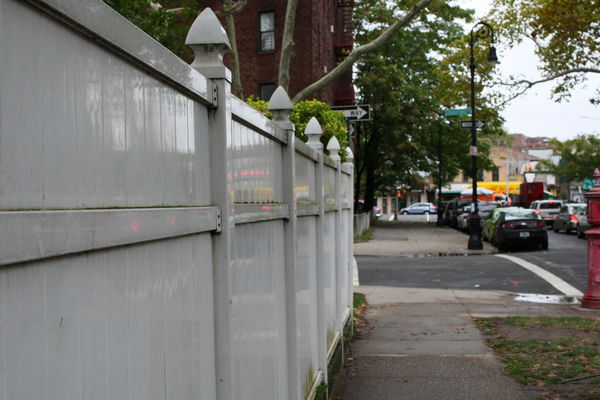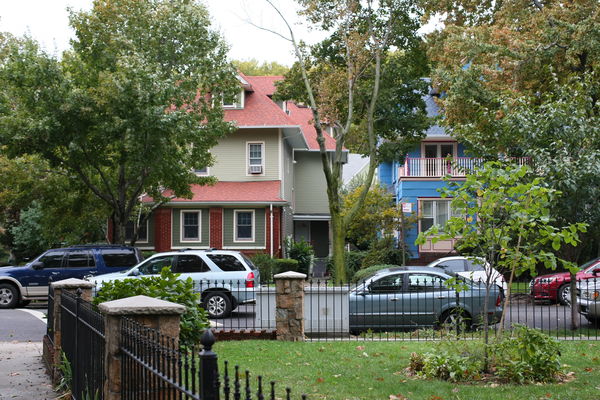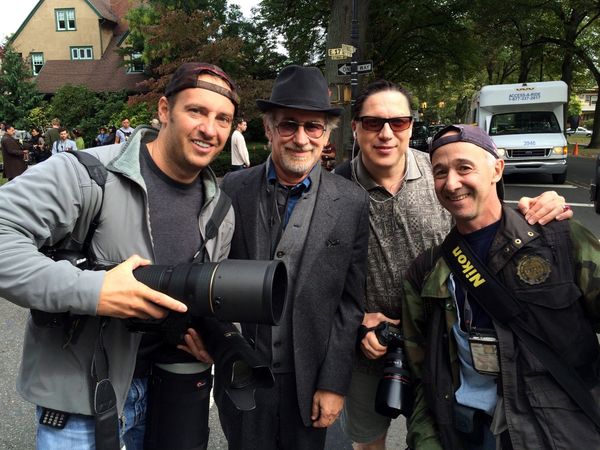Canon’s 1DMk3 and its exposure...
Mar 20, 2018 10:05:06 #
Hello everyone and I’m a new member on here, and wanted to ask a question about my now dated 1DMk3.
I’ve owned my trusted 1DMk3 for over 5 years and could never understand its exposure, or rather OVERexposure.
Previously, I owned Canon’s 20D and never had this problem.
When I used 20D and would set its Exposure Level Indicator amount right in the middle, pictures would come out very nicely exposed, with everything in balance – rarely over & under-exposed.
I don’t believe it’s a defect, but with 1DMk3, from day one, whenever I do the same thing (set the exposure indicator in the middle), images come out quite over-exposed and with pretty much blown-out highlights. Forget about using anything larger than f/6.3 particularly on a sunny day, regardless of the lens.
So, I usually set exposure compensation to a negative amount of about -1 1/3 to -2 stops for a decent, (closer to reality) exposure and stop down to f/8 and above.
Additionally, even at 3 stops underexposed, I sometimes get a blinking overexposure"warning" indicator on the back screen, particularly when the sky gets in the shot, so I have GND filters attached to all my lenses at all times to minimize overexposure.
Using Gossen light meter at times offers inconsistent and a bit confusing results.
Presently I use 40mm f/2.8 pancake, 24-70 f/2.8 L and 70-20 f/2.8 IS USM.
Can anyone explain this behavior and disparity between the 2 cameras’ basic exposure settings.
Thanx.
I’ve owned my trusted 1DMk3 for over 5 years and could never understand its exposure, or rather OVERexposure.
Previously, I owned Canon’s 20D and never had this problem.
When I used 20D and would set its Exposure Level Indicator amount right in the middle, pictures would come out very nicely exposed, with everything in balance – rarely over & under-exposed.
I don’t believe it’s a defect, but with 1DMk3, from day one, whenever I do the same thing (set the exposure indicator in the middle), images come out quite over-exposed and with pretty much blown-out highlights. Forget about using anything larger than f/6.3 particularly on a sunny day, regardless of the lens.
So, I usually set exposure compensation to a negative amount of about -1 1/3 to -2 stops for a decent, (closer to reality) exposure and stop down to f/8 and above.
Additionally, even at 3 stops underexposed, I sometimes get a blinking overexposure"warning" indicator on the back screen, particularly when the sky gets in the shot, so I have GND filters attached to all my lenses at all times to minimize overexposure.
Using Gossen light meter at times offers inconsistent and a bit confusing results.
Presently I use 40mm f/2.8 pancake, 24-70 f/2.8 L and 70-20 f/2.8 IS USM.
Can anyone explain this behavior and disparity between the 2 cameras’ basic exposure settings.
Thanx.
Mar 20, 2018 10:10:22 #
Mar 20, 2018 10:24:30 #
ISO setting? Exposure mode setting? Can you send an example? With the EXIF data there are certainly some experts here who could be of help.
Mar 20, 2018 10:28:55 #
Your histogram and highlight indicators are more effective at judging exposure for each situation with each specific camera. You can then use any of the multiple tools provided by the camera to adjust the exposure to the specific situation. These are more effective than basing your exposure on your experiences with a different camera. You might also investigate whether some of subtle settings available with the 1D3 are working for or against you. Investigate the camera settings for Highlight Tone Priority and Safety Shift.
You might want to post an unaltered JPEG example so we can see all of the Canon-specific settings from the EXIF data. You didn't mention your shooting mode nor metering mode. Adjusting the aperture is only 1 side of the exposure triangle when adjusting for a given situation.
The 1D3 features a 63-zone metering sensor linked to the 19 AF points. It should perform the same or better than the 20D, assuming the same metering mode is used on both cameras for the same lens and light along with other applicable settings.
You might want to post an unaltered JPEG example so we can see all of the Canon-specific settings from the EXIF data. You didn't mention your shooting mode nor metering mode. Adjusting the aperture is only 1 side of the exposure triangle when adjusting for a given situation.
The 1D3 features a 63-zone metering sensor linked to the 19 AF points. It should perform the same or better than the 20D, assuming the same metering mode is used on both cameras for the same lens and light along with other applicable settings.
Mar 20, 2018 12:14:24 #
Mar 20, 2018 12:23:05 #
Aldente wrote:
Typically I use Center-weighted Average Metering
You're telling the camera the center of the frame, as defined by the AF points, is more important than the background, although the background / edges should be considered. Blown highlights in these portions of the frame are a possible result in high contrast situations. You might investigate Evaluative Metering on page 90 of the manual.
Mar 20, 2018 12:52:34 #
Aldente wrote:
Typically I use Center-weighted Average Metering
Al, welcome to the Hog, where some fight some of the time and others fight all of the time!!! LoL
Of course, maybe the camera is broken!
That camera should have the ability to link any specific focus point with the spot meter. So it could meter anywhere in the focus point array.
Could it be stuck somewhere? Who knows.
Is anything in proper exposure anywhere in the frame, if so, is that area consistently in proper exposure?
Well just assume you don’t have it in Auto bracketing or exposure compensation. And maybe that’s broken?
Does it behave the same on Manual mode?
Good luck
SS
Mar 20, 2018 13:08:39 #
CHG_CANON wrote:
Your histogram and highlight indicators are more e... (show quote)
========
Thank you kindly for your reply.
Yes, 1DMk3 IS better than 20D on all accounts, though I don't have A/B comparison shots between the 2 cameras under the same conditions.
On average, with 20D, I never had to think about overexposing as it was pretty much a non-issue.
Now I'm "afraid" to photograph the skies without GND filter -- something I knew nothing about with 20D and why now I prefer rainy/overcast days.
So, basically 1DMk3 is SUPER sensitive to light - and that is my main problem.
I wouldn't mind getting overexposed images IF I did it on purpose by overexposing them myself, but for me it's a constant struggle of what to do: to blow out highlights and get the rest looking OK, or do I underexpose everything and then fix it it in the post-processing?
The similar to my present settings on 1DMk3, my 20D settings weren't really problematic exposure-wise.
If something on a histogram looked a tad bright, slight adjustment would almost always yield balanced exposure in the next shot.
So, due to overexposure I now use Highlight Tone Priority virtually all the time, (that gives me ISO=200), as I also stay in Manual mode and use Center-weighted Average Metering with mostly center focus point.
Without going through thousands of images, I'm attaching a few I found right off the bat - just to give everyone here an idea.
For better examples I might need to delve deeper into my archives.
Thank you all for anticipated suggestions.
Mar 20, 2018 13:16:45 #
SharpShooter wrote:
Al, welcome to the Hog, where some fight some of t... (show quote)
Thank you for your reply and warm welcome...:)
To my understanding everything seems to be working fine and the images devoid of contrasty situations, show great universal exposure and balance.
And some time ago the camera was evaluated by Canon with their multi-point checking procedure and didn't reveal any artifacts.
No bracketing use and I predominantly use Manual mode.
Mar 20, 2018 13:20:47 #
CHG_CANON wrote:
You're telling the camera the center of the frame, as defined by the AF points, is more important than the background, although the background / edges should be considered. Blown highlights in these portions of the frame are a possible result in high contrast situations. You might investigate Evaluative Metering on page 90 of the manual.
Thank you for your suggestions. I will try to set the camera to Evaluative Mode, but to my recollection, I think over-exposure was the reason why I stopped using it.
Mar 20, 2018 14:10:51 #
Your example images report a mixture of manual exposure and Program AE. As mentioned before, the histogram and highlight warning "blinkies" are DSLR tools to assist the photographer in capturing properly exposed images when the manual exposure is set by the photographer as well as other shooting modes.
Using the image with the two houses (yellow and blue), the highlights along the chimny of the yellow house and eaves of the blue house in the JPEG are reported as clipped when analyzed in Lightroom. Lowering the highlights and the overall exposure creates a pleasing image. Personally, I would prefer a brighter image SOOC and then PP adjustments. Creating the same results SOOC requires the photographer to adjust the exposure where the ISO could be lowered or the shutter speed increased give the 40mm lens, again using the histogram and blinkies for assistance.
Using the image with the two houses (yellow and blue), the highlights along the chimny of the yellow house and eaves of the blue house in the JPEG are reported as clipped when analyzed in Lightroom. Lowering the highlights and the overall exposure creates a pleasing image. Personally, I would prefer a brighter image SOOC and then PP adjustments. Creating the same results SOOC requires the photographer to adjust the exposure where the ISO could be lowered or the shutter speed increased give the 40mm lens, again using the histogram and blinkies for assistance.
Mar 20, 2018 16:21:57 #
CHG_CANON wrote:
Your example images report a mixture of manual exp... (show quote)
------
Once again, thanx for your assessment and analysis.
I agree with you 100% as I'd also like to get the images of desired exposure SOOC, instead of choosing between two "exposure evils". Can't imagine that everyone on here has the same dilemma...
And I've seen some absolutely amazing JPEG shots by other photographers, whose exposures were spot on, despite challenging contrasty situations.
As for the "blinkies", I'm sorry, but as I had mentioned previously, with the 3 stops of under-exposure, there shouldn't be ANY "blinkies". It seems that the camera responds to ANY white area in the image by displaying highlight "warnings". Really strange.
Playing, as you suggested, with ISO and Shutter speed has been yielding less than ideal results, alluding to a toss-up between what I'd LIKE to have and what the camera allows/offers me as a compromise... :)
Yet, these annoyances weren't really an issue with a 20D.
Mar 21, 2018 08:51:52 #
I would take the camera off Highlight Tone Priority to retain direct access to ISO-100. All the examples posted seem fine although processing can be applied to further adjust the highlights and shadows. The HTP takes away ISO-100 as a tool to manually adjust your exposure in bright conditions with fast lenses.
Your original comment talked about underexposing by 3 stops to obtain the correct exposure. Without being physically there and having a 2nd known camera meter and the same lens to compare, this is next to impossible to assess from the results that are properly exposed.
Regarding where the meter falls on the Exposure Level Indicator in the Viewfinder, I don't pay attention to whether it's on 0 or not. That's not important. Rather, I use my histogram and highlight alerts to determine my 'correct' exposure to the situation based on my desired aperture, ISO and shutterspeed. With the camera to my eye, I use shutterspeed, typically, to make incremental adjustments to the exposure while shooting. That is, say the indicator showed +1 in the viewfinder after I'd adjusted my settings and 'approved' the test image. If I was then tracking a bird, person, etc and noted the indicator had moved to +2, I can turn the Main Dial on my model to change the shutterspeed. I can adjust the aperture and / or the ISO with the Quick Control dial to make the same change, all working from the view finder without lowering the camera. Having the camera controls to actively manage (override) the exposure meter of the camera is a feature of a DSLR.
It's possible the highlight alerts have been improved by Canon or differ on your specific model. Again, it's impossible to demonstrate such an idea without being in the same situation with a different camera to then compare and make an assessment.
I only have 1 EOS digital model so I can't run a model x to model y experiment on this end. I have done long exposure exercises in the past using 6- and 10-stop NDs. The exercise was capturing first with my DSLR and then with my 1v film EOS. I've found it useful to meter with my DSLR at the rated film speed and confirm the exposure from the DSLR. Then, I've manually dialed-in that exposure into the film camera and made the capture. Your overall question is focused on the consistency of the 1D3 to the 20D. Although not directly applicable to a yes / no comment, my experience with an EOS 1v and 5D3 is the meters are completely consistent.
Your original comment talked about underexposing by 3 stops to obtain the correct exposure. Without being physically there and having a 2nd known camera meter and the same lens to compare, this is next to impossible to assess from the results that are properly exposed.
Regarding where the meter falls on the Exposure Level Indicator in the Viewfinder, I don't pay attention to whether it's on 0 or not. That's not important. Rather, I use my histogram and highlight alerts to determine my 'correct' exposure to the situation based on my desired aperture, ISO and shutterspeed. With the camera to my eye, I use shutterspeed, typically, to make incremental adjustments to the exposure while shooting. That is, say the indicator showed +1 in the viewfinder after I'd adjusted my settings and 'approved' the test image. If I was then tracking a bird, person, etc and noted the indicator had moved to +2, I can turn the Main Dial on my model to change the shutterspeed. I can adjust the aperture and / or the ISO with the Quick Control dial to make the same change, all working from the view finder without lowering the camera. Having the camera controls to actively manage (override) the exposure meter of the camera is a feature of a DSLR.
It's possible the highlight alerts have been improved by Canon or differ on your specific model. Again, it's impossible to demonstrate such an idea without being in the same situation with a different camera to then compare and make an assessment.
I only have 1 EOS digital model so I can't run a model x to model y experiment on this end. I have done long exposure exercises in the past using 6- and 10-stop NDs. The exercise was capturing first with my DSLR and then with my 1v film EOS. I've found it useful to meter with my DSLR at the rated film speed and confirm the exposure from the DSLR. Then, I've manually dialed-in that exposure into the film camera and made the capture. Your overall question is focused on the consistency of the 1D3 to the 20D. Although not directly applicable to a yes / no comment, my experience with an EOS 1v and 5D3 is the meters are completely consistent.
Mar 21, 2018 10:58:02 #
CHG_CANON wrote:
I would take the camera off Highlight Tone Priorit... (show quote)
----------------
My initial main objective of the post was to question as to why I consistently, on pretty much every single shot, need to dial down the exposure by about 1 1/3 to 2 stops under almost all shooting conditions on one camera vs. not having to do that on the other, when both cameras are by the same manufacturer.
I do understand the variables involved in setting the 'exposure triangle', but then why would a manufacturer put a center detent in the exposure meter if one can only use it as a "reference point" on one camera and not the other, and something the manufacturer touts as being "a correct" exposure indicator?
I'm happy that in your world your meters are consistent between various makes and models of the cameras. Unfortunately, in mine it has not been the case -- and THAT is the crux of the matter I've brought up.
So, I guess I'll resort to accepting life's imperfections and continue on with the inconsistencies and annoyances of forced exposure compensation.
I appreciate your helpful kind advices and if anyone else wants to chime in on the subject, I'd like to hear from them.
If you want to reply, then register here. Registration is free and your account is created instantly, so you can post right away.




